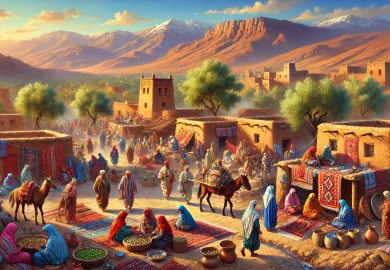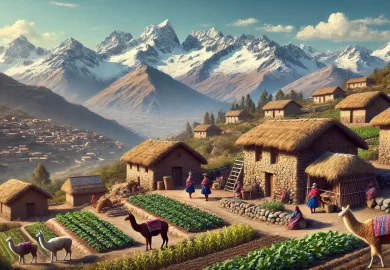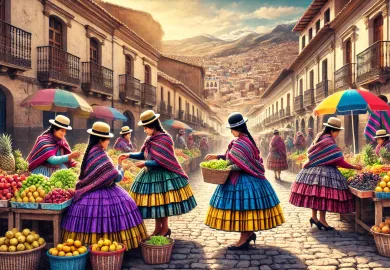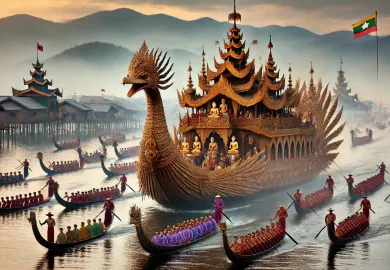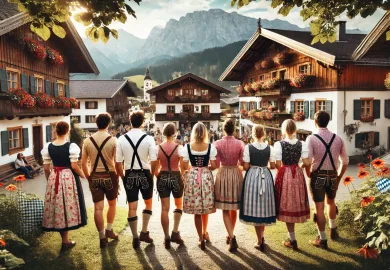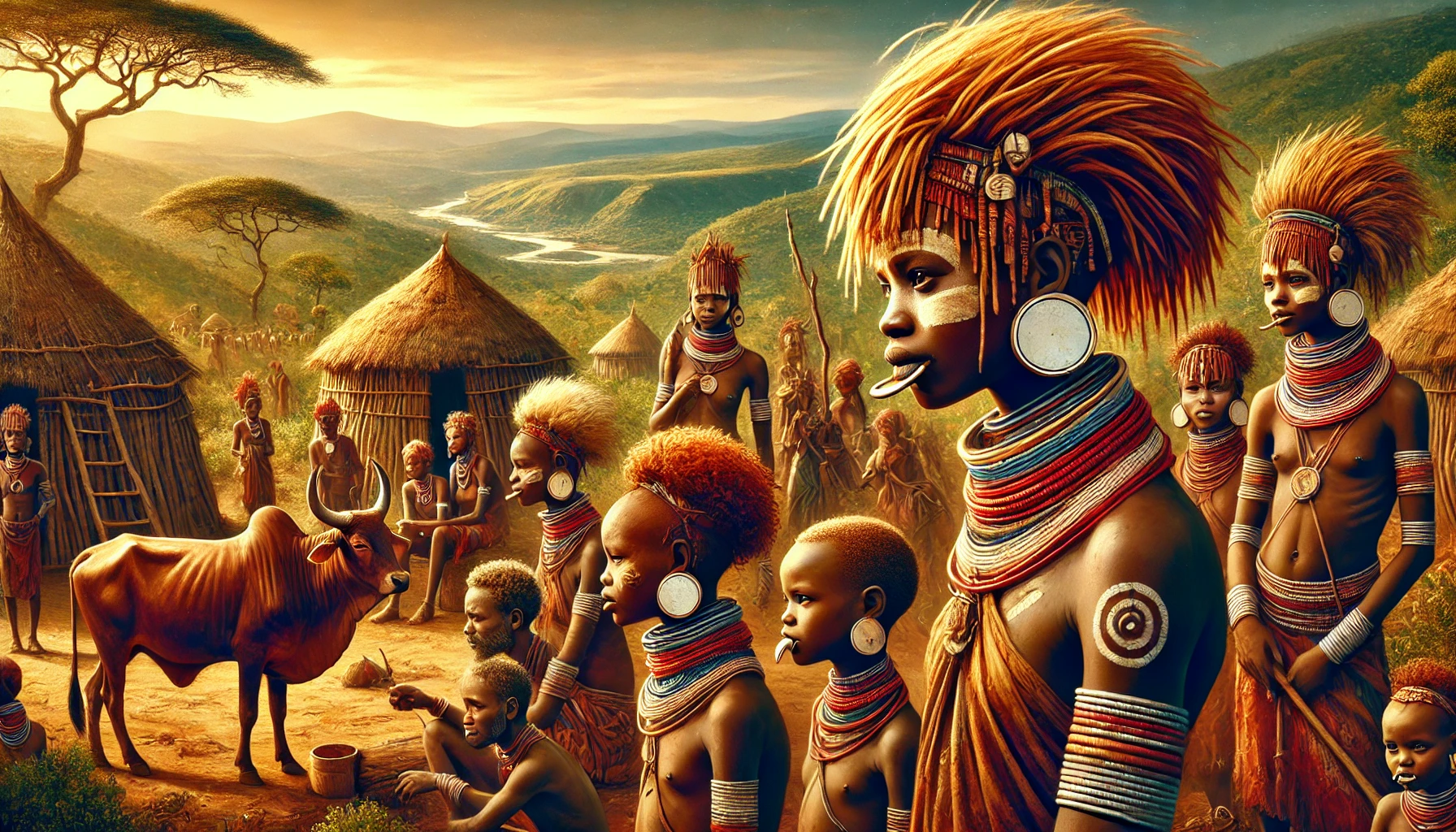
The Omo Valley, nestled in the southwestern region of Ethiopia, is one of the most culturally rich and diverse places on Earth. Home to over a dozen distinct tribes, this remote area is a living museum of ancient customs, traditions, and ways of life that have remained largely unchanged for centuries. Among these tribes, the Omo people stand out for their vibrant culture, unique rituals, and intricate social structures. This article delves into the fascinating world of the Omo people, exploring their cultural heritage, way of life, and the challenges they face in the modern world.
The Diverse Tribes of the Omo Valley
The Omo Valley is home to an astonishing diversity of ethnic groups, each with its own distinct language, traditions, and cultural practices. The valley’s isolation, combined with the natural barriers of the surrounding terrain, has allowed these tribes to preserve their cultural identities over millennia.
One of the most well-known tribes in the Omo Valley is the Hamar. The Hamar people are recognized for their elaborate hairstyles and body adornments, including the use of clay and butter in their hair and the wearing of vibrant beadwork. The Hamar are also famous for their “bull-jumping” ceremony, a rite of passage for young men that symbolizes their transition into adulthood.
Another prominent tribe is the Mursi, who are particularly famous for the lip plates worn by the women. These large clay discs, inserted into a pierced lower lip, are a symbol of beauty and social status within the Mursi community. The process of stretching the lip and wearing these plates begins at a young age and is a significant part of Mursi cultural identity.
The Karo tribe, though smaller in number, are known for their body painting practices. Using white chalk, red ochre, and charcoal, Karo men and women create intricate patterns on their bodies, which serve as both decoration and a form of communication. These paintings are often done in preparation for special events, such as dances, weddings, or battles.
Unique Traditions and Rituals of the Omo People
The Omo people’s traditions and rituals are deeply embedded in their daily lives and are a vital part of their cultural heritage. These practices are often tied to significant life events, such as birth, marriage, and death, and they play a crucial role in maintaining the social fabric of the community.
One of the most striking rituals among the Omo tribes is the practice of scarification. Both men and women undergo this painful process, which involves cutting the skin with a sharp object and then rubbing ash or dirt into the wound to create raised scars. For men, these scars are often a mark of courage and valor, while for women, they are considered a sign of beauty and fertility.
Marriage in the Omo Valley is another deeply significant cultural practice, often involving elaborate ceremonies and rituals. In many tribes, marriages are arranged by the families, and the groom’s family typically pays a bride price, which may include cattle, goats, or other valuable goods. The wedding ceremony itself is a grand affair, with traditional music, dance, and feasting that can last for several days.
Death and burial practices among the Omo people also vary from tribe to tribe, but they are universally seen as a crucial transition in the life cycle. Some tribes, like the Dassanech, practice elaborate mourning rituals that involve the entire community. Others, such as the Mursi, have specific burial customs that reflect their beliefs about the afterlife and the importance of honoring the deceased.
The Role of Art and Music in Omo Culture
Art and music are integral components of the Omo people’s cultural expression. These creative forms are not only means of personal expression but also serve as vital tools for communication, storytelling, and the preservation of history.
The body painting and scarification mentioned earlier are prime examples of how art is woven into the daily lives of the Omo people. These practices are not merely decorative but carry deep symbolic meanings. For instance, the designs used in body painting often represent aspects of nature, such as animals or plants, and can convey messages about the wearer’s social status, achievements, or emotional state.
Music and dance are also central to the cultural life of the Omo tribes. Each tribe has its own distinct musical traditions, often involving unique instruments and rhythms. The Hamar people, for example, are known for their energetic dances, which are often accompanied by the sound of drums and horns. These dances are usually performed during important social events, such as weddings or harvest festivals, and are a way for the community to come together and celebrate.
Storytelling through song is another important aspect of Omo culture. Many of the tribes have oral traditions that have been passed down through generations, with songs that tell the stories of their ancestors, recount historical events, or teach moral lessons. These songs are often performed during communal gatherings, where the entire tribe participates in the singing and dancing.
Challenges Facing the Omo People in the Modern World
Despite their rich cultural heritage, the Omo people face numerous challenges in the modern world. The encroachment of modernity, combined with environmental changes and political pressures, threatens to disrupt their traditional way of life and erode their cultural practices.
One of the most significant challenges is the loss of land. Many of the tribes in the Omo Valley rely on pastoralism and small-scale agriculture for their livelihoods. However, in recent years, large tracts of land have been appropriated for commercial farming and development projects, often without the consent of the indigenous communities. This has led to displacement and a loss of access to vital resources, such as water and grazing land.
Climate change is another pressing issue for the Omo people. The region is highly vulnerable to changes in weather patterns, which can lead to droughts, floods, and other extreme weather events. These environmental changes have a direct impact on the Omo tribes’ ability to sustain their traditional livelihoods and have led to increased competition for scarce resources.
The influence of external cultures and globalization also poses a threat to the preservation of the Omo people’s unique traditions. As more outsiders come into contact with the Omo Valley, there is a growing pressure for the tribes to assimilate into the broader Ethiopian society. This can lead to the erosion of traditional practices, as younger generations may be more inclined to adopt modern ways of life.
In conclusion, the Omo people and their culture represent a unique and invaluable part of the world’s cultural heritage. Their diverse traditions, rituals, and ways of life offer a window into a world that is rapidly disappearing. It is crucial that efforts are made to preserve and protect the cultural heritage of the Omo people, not only for their own sake but for the benefit of future generations who can learn from their wisdom and experience.

